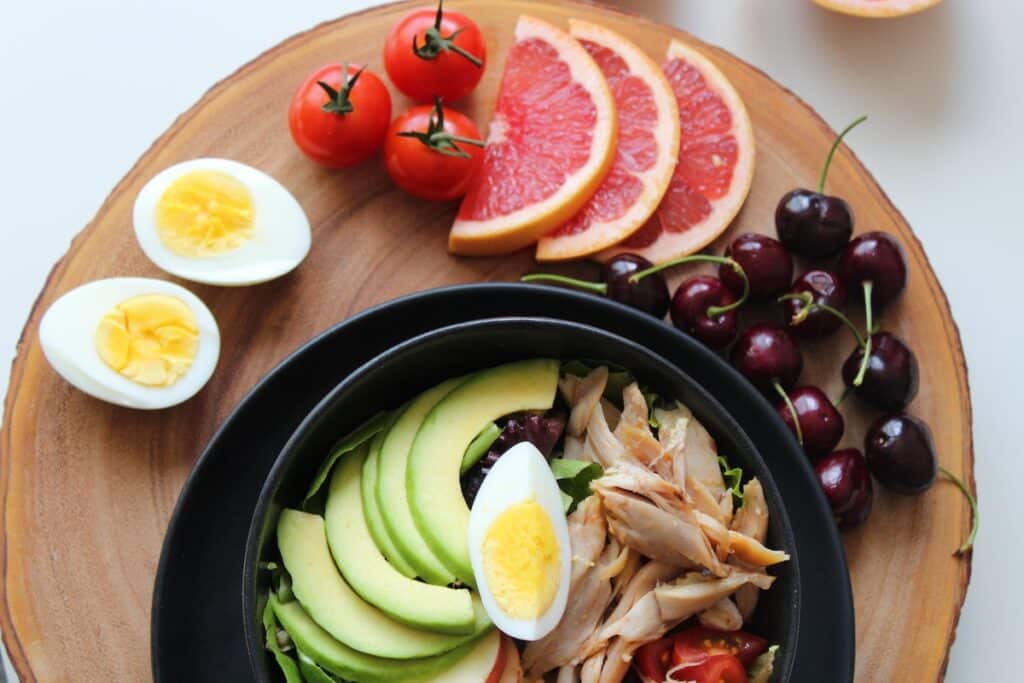Are you tired of struggling with excess weight and feeling discouraged by the daunting task of losing those extra pounds? You’re not alone. At first glance, it may seem like an uphill battle, but with the right approach, shedding 10 pounds in 2 weeks is absolutely achievable.
In this article

Say goodbye to crash diets, fad trends, and quick fixes that yield short-lived results. We will provide you with science-backed techniques that prioritize your health and well-being, empowering you to take control of your weight loss journey in a sustainable manner.
Is it possible to lose 10 pounds in 2 weeks?
Yes, it may be possible to lose 10 pounds in 2 weeks, but it is important to note that quick weight loss can have potential risks and may not be sustainable in the long term.
According to the Mayo Clinic Diet, a healthy rate of weight loss is 1 to 2 pounds per week after an initial two-week phase where you can lose up to 6 to 10 pounds.
[Related: Intermittent Fasting Weight Loss Hacks]
While there are endless diets, supplements, and meal replacement plans claiming to ensure rapid weight loss, most lack scientific evidence and may be ineffective or even harmful.
For perspective, the average placebo-adjusted weight reductions with older antiobesity medications that are currently approved by the FDA for the treatment of obesity are approximately 3.0 to 8.6% as seen in a study.
Overall, fast weight loss can be achieved through a combination of healthy eating habits, regular exercise, and lifestyle changes. However, it is important to approach it with caution and choose a diet and weight loss plan that is effective and safe.
What are the factors affecting weight loss?
It’s important to understand that the amount of weight one can lose in a given timeframe may depend on various factors including:
1. Caloric intake and physical activity
Creating a calorie deficit by consuming fewer calories than you burn through physical activity can lead to weight loss. Increasing physical activity levels can also help in achieving weight loss goals faster and maintaining weight loss.
[Related: How Many Calories Do I Burn in A Day? (The Truth)]
2. Stress management
Managing stress in your life, from career to relationships and beyond, can impact how your body releases or holds onto weight. High-stress levels can affect hormonal balance and metabolism, which can in turn impact weight loss efforts.
3. Genetics and family history
Family history and genetics can play a role in weight management. If overweight or obesity tends to run in your family, your chances of being overweight may be greater.
4. Underlying health conditions
Certain health conditions such as cancer, dementia, depression, diabetes, hypercalcemia (high blood calcium level), and hyperthyroidism (overactive thyroid) can affect weight loss efforts or cause unexplained weight loss.
5. Diet adherence and medication use
Factors such as adherence to a specific diet plan, physical activity levels, age, sex, and use of specific medications can also affect weight loss capacity.
What diet should you follow to lose 10 pounds in 2 weeks?
If you’re looking to lose 10 pounds in 2 weeks, it’s important to approach it in a healthy and sustainable manner. Here is a list of diets or strategies to help you shred those pounds.
1. Create a calorie deficit
To lose weight, you need to create a calorie deficit by burning more calories than you consume. Aim for a calorie deficit of 500-1000 calories per day, which may help you lose 1-2 pounds per week. Keep in mind that the minimum calories for weight loss should not fall below about 1,500 calories per day to ensure you are getting adequate nutrition.
2. Focus on whole, nutrient-dense foods
Choose foods that are rich in nutrients and low in empty calories. Include plenty of fruits, vegetables, lean proteins, whole grains, and healthy fats in your diet. These foods can help keep you full, provide essential nutrients, and support weight loss.

2. Limit added sugars and processed foods
Foods high in added sugars and processed carbohydrates can contribute to weight gain. Limit your intake of sugary beverages, candies, baked goods, and processed snacks. Opt for healthier options like water, herbal tea, fresh fruits, and homemade snacks made with whole ingredients.
3. Watch your portion sizes
Pay attention to portion sizes and avoid overeating. Use smaller plates and bowls to control portion sizes, and listen to your body’s hunger and fullness cues. Avoid eating large meals close to bedtime, as it may interfere with digestion and weight loss goals.
4. Stay hydrated
Drinking enough water throughout the day can help keep you hydrated and may aid in weight loss. Water has no calories and can help you feel full, which may reduce your overall calorie intake. Aim for at least 8-10 cups of water per day, or more if you are physically active or in hot weather.
5. Practice mindful eating
Pay attention to your eating habits and avoid mindless eating. Eat slowly, savor each bite, and avoid distractions such as screens while eating. Listen to your body’s hunger and fullness signals and stop eating when you feel satisfied, not overly full.
[Related: 21 Healthy Eating Facts and Statistics You Probably Didn’t Know About]
Example meal plan

Here is a sample meal plan you could follow that will help you lose 10 pounds in 2 weeks:
Day 1
- Breakfast: Two boiled eggs, a slice of whole-grain toast, and a cup of unsweetened green tea.
- Snack: A small apple and 1 oz (28 g) of almonds.
- Lunch: Grilled chicken breast, a cup of steamed broccoli, and half a cup of cooked quinoa.
- Snack: A cup of plain Greek yogurt with half a cup of berries.
- Dinner: Baked salmon with a side of roasted Brussels sprouts and a small baked sweet potato.
Day 2
- Breakfast: Oatmeal with sliced banana, cinnamon, and a tablespoon of almond butter.
- Snack: A small pear and 1 oz (28 g) of cashews.
- Lunch: A spinach salad with grilled chicken breast, cherry tomatoes, cucumbers, and balsamic vinaigrette dressing.
- Snack: A hard-boiled egg and a small carrot.
- Dinner: Grilled flank steak with a side of steamed asparagus and half a cup of cooked brown rice.
Day 3
- Breakfast: Greek yogurt with granola and sliced banana.
- Snack: Roasted chickpeas.
- Lunch: Grilled shrimp with mixed greens salad and vinaigrette dressing.
- Snack: Celery sticks with peanut butter.
- Dinner: Turkey chili with a side salad.
Day 4
- Breakfast: Spinach and feta omelette with whole grain toast and orange slices.
- Snack: Hard-boiled egg.
- Lunch: Grilled chicken breast with mixed greens salad and vinaigrette dressing.
- Snack: Raw almonds.
- Dinner: Grilled tofu with roasted vegetables.
Day 5
- Breakfast: Whole grain waffles with sliced banana and peanut butter.
- Snack: Cottage cheese with pineapple chunks.
- Lunch: Turkey burger with whole grain bun and side salad.
- Snack: Bell pepper slices with hummus.
- Dinner: Grilled salmon with quinoa and steamed vegetables.
Repeat this meal plan for the remaining 12 days, making sure to include a variety of nutrient-dense foods like lean protein, complex carbohydrates, and healthy fats. Additionally, remember to drink plenty of water throughout the day and engage in regular exercise.
What are some workouts you can do?
Losing 10 pounds in 2 weeks requires a combination of exercise and calorie deficit. Combining cardiovascular exercises and resistance training can lead to higher weight loss. You can consider the following exercises:
- Running: 30 minutes of running can burn around 300 calories.
- Rope jumping: 15 minutes of rope jumping can burn around 200 calories.
- High-Intensity Interval Training (HIIT): 30 minutes of HIIT can burn around 400 calories.
- Swimming: 30 minutes of swimming can burn around 350 calories.
- Cycling: 1 hour of cycling can burn around 850 calories

High-intensity workouts
High-intensity workouts can help increase your calorie burn and speed up fat loss. Consider incorporating high-intensity exercises such as high knees, butt-kicks, bounding, and reverse run into your warm-up routine.
[Related: The Ultimate HIIT Core Workout (Do This In Your Living Room)]
Resistance training
Incorporate weightlifting or resistance training into your workout routine to build lean muscle mass. This can help boost your metabolism and burn more calories even at rest. Include exercises such as lunges, squats, push-ups, and dumbbell exercises in your routine.
Increase physical activity
Try to incorporate more physical activity into your daily routine, such as taking the stairs instead of the elevator, going for brisk walks, or doing household chores. These activities can help you burn additional calories and contribute to weight loss.
Rest and recovery
Make sure to allow for adequate rest and recovery between workout sessions to prevent overtraining and reduce the risk of injury. Aim for 7-9 hours of quality sleep each night to support your weight loss goals.
Tips to safely lose 10 pounds in 2 weeks
Losing 10 pounds in 2 weeks requires a combination of a calorie deficit through diet and increased physical activity. Here are some tips to safely lose 10 pounds in 2 weeks:
1. Aim for a calorie deficit
Create a daily calorie deficit of 500-1000 calories by consuming fewer calories than you burn. However, do not fall below a minimum of 1500 calories per day to ensure proper nutrition.
2. Eat a well-balanced diet
Opt for low-fat dairy products, lean meat, poultry, avocados, almonds, fruits, vegetables, and high-fiber foods that are more satiating.
3. Increase physical activity
Combine cardio and resistance training (weightlifting) for higher weight loss. Regular physical activity, along with calorie restriction, can help burn off excess calories and boost weight loss.
4. Stay hydrated
Drink at least 64 ounces of water per day to stay hydrated and avoid unnecessary snacking.
5. Get enough sleep
Proper sleep is important for weight loss as it helps regulate hormones and reduces stress.
Frequently Asked Questions (FAQs)
Got more questions about how to lose 10 pounds in 2 weeks? Check out some commonly asked questions about this topic below.
Can I lose weight without exercising while following a healthy diet plan?
Exercise is an essential component of any weight loss plan as it helps burn calories, build muscle, and boost metabolism. However, if you are unable to engage in vigorous exercise, you can still achieve weight loss through dietary modifications alone. By choosing nutrient-rich foods, controlling portion sizes, and reducing added sugars and processed foods, you can create a calorie deficit and lose weight without intense exercise. However, incorporating physical activity into your routine can enhance the weight loss process and improve overall health.
Is it possible to lose 10 pounds in 2 weeks without compromising my health?
Yes, it is possible to lose 10 pounds in 2 weeks without compromising your health by following a healthy and balanced diet, engaging in regular exercise, staying hydrated, and getting enough rest. It’s crucial to consult with a healthcare professional or a registered dietitian before making any significant changes to your diet or exercise routine to ensure safety and effectiveness.
Can I still enjoy my favorite foods while trying to lose 10 pounds in 2 weeks?
Yes, you can still enjoy your favorite foods in moderation while trying to lose weight. The key is to prioritize nutrient-dense, whole foods, and practice portion control. The blog post will provide you with guidance on making healthier choices, incorporating variety in your meals, and finding a sustainable balance between indulgences and mindful eating. Remember, it’s all about creating a healthy and enjoyable eating pattern that you can sustain in the long run.
Final Word
Are you ready to embark on this journey toward a healthier and fitter you? Remember, consistency and commitment are key to success. By making small, sustainable changes to your nutrition, exercise, and lifestyle habits, you can achieve your desired results and maintain them in the long run.
Remember, you are capable of achieving your weight loss goals with dedication, determination, and a positive mindset. Take the first step today and start your journey towards a healthier, happier you!
